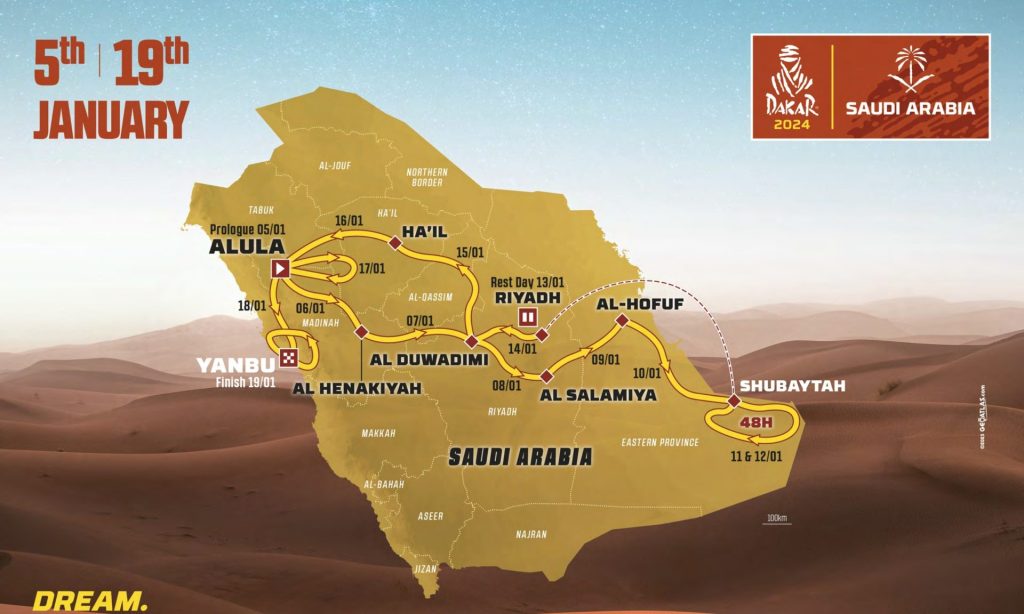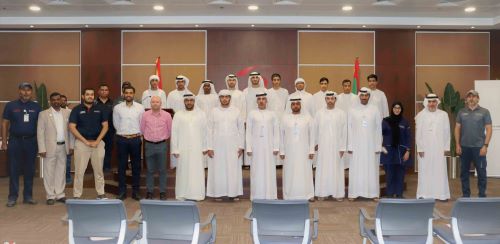Dakar 2024 competitors to face daunting terrain in Saudi Arabia

Rally includes 60% of all-new sections across the vast country
In its fifth edition in Saudi Arabia, the Dakar Rally (January 5-19, 2024) is set to test the limits of man and machine like never before. The 46th edition of the competition, organised by Amaury Sport Organisation (A.S.O.), starts with a scorching first week in AlUla.
However, the trial awaits in the Empty Quarter triptych, introducing a groundbreaking concept: a 48-hour chrono stage spread over two days. Competitors, dispersed among eight bivouacs, will be left to navigate the challenging terrain independently.
Even the rest day in Riyadh provides only a brief respite, as the varied landscape between Riyadh and the finish line in Yanbu poses navigational challenges that could reshape the standings at any moment.
“The challenge will be just as daunting as last January,” warns race director David Castera, who promises the competitors massive stretches of dunes where navigation difficulties accompany the technical challenges of crossing them.
Captivating experience
The allure of AlUla and its surroundings left an indelible mark on the Dakar field when the race first graced Saudi Arabia in January 2020. The vibrant landscapes, rich history, and mystery create a captivating experience, inviting contemplation.
Returning to AlUla, participants will converge on a super-sized bivouac, fostering camaraderie and a shared passion for the desert’s beauty.
While the competitors first encountered the wonders of AlUla in 2020, the 2024 edition allows for a deeper immersion in the atmosphere of the thousand-year-old archaeological sites. The start camp principle, previously successful on the coast, now extends to the desert, with the bivouac situated near the majestic temples built by the Nabataeans.

Drawing inspiration from these enduring structures, participants will set the stage for adventure and discovery before embarking on the extensive route.
After a challenging 2023 edition that showcased competitors’ resilience, Dakar 2024 maintains its reputation as a formidable challenge. Covering a distance of 5,000km, including 60% of all-new sections, the route spans Saudi territory.
Nine bivouacs
Nine bivouacs will be strategically placed on a west-east trajectory, leading to the final finish in Yanbu on the Red Sea’s shores.
A new stage format awaits the competitors, spanning two days with marathon stage constraints. While collaboration is allowed in the evenings, there’s a twist—participants will not have the luxury of choosing canteen or repair companions, as teams will be spread across eight different bivouacs.
At 4pm, all vehicles must halt at the nearest bivouac, with competitors camping until the next morning’s 7am departure. The tally will be determined after approximately 600km of the special stage.
The vast Empty Quarter will host the unprecedented 48-hour stage, featuring separate courses for motorbikes/quads and cars/trucks.
Unlike previous editions, the top FIA teams will not benefit from two-wheeler tracks, relying solely on their navigational skills.
The introduction of ‘bonuses’ for motorbike stage openers, seen in the previous edition, will be applied in this exceptional 48-hour challenge.
As part of the Dakar Future programme, the competition’s Mission 1000 operation offers constructors an opportunity to test vehicles with innovative technologies on Dakar terrain: over a hundred kilometres per day, with their performance evaluated in a giant laboratory. Three engine types have been selected for Mission 1000: fully electric / fully hydrogen-powered / hybrid technology.
Featured image: Nassr Al-Attiyah (Qatar) and Mathieu Baumel (France), Toyota Gazoo Racing, Toyota Hilux, Auto, in action during Stage 3 of the Dakar 2023 between AlUla and Haïl, on January, 2023. Image: A.S.O./F. Gooden/DPPI
Last Updated on 10 months by Arnold Pinto













